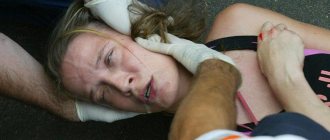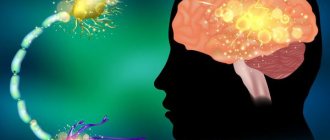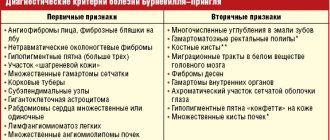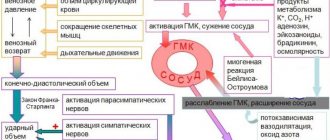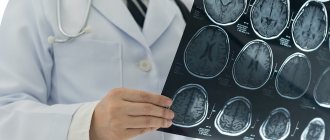Definition of frontal lobe epilepsy
Frontal epilepsy is one of the forms of epilepsy, accompanied by seizures, the focus of which is located in the frontal regions of the brain. Frontal lobe epilepsy is the second most common and accounts for approximately 30% of other forms.
Frontal lobe epilepsy can develop at any age. The likelihood of developing this form of epilepsy is the same in men and women.
Features of a frontal epileptic seizure:
- A motor phenomenon that is accompanied by gestural automatisms at the beginning of an attack. There are tonic, clonic and postural;
- The attack lasts several seconds;
- Rapid secondary generalization, observed more often during temporal lobe seizures;
- Minimal or complete absence of postictal confusion;
- Attacks occur frequently, mostly occurring at night. Consciousness may be preserved or partially impaired. The clinical pattern of a seizure depends on the location of the lesion.
Focal epilepsy
The leading symptom complex of FE is repeated partial (focal) epileptic paroxysms. They can be simple (without loss of consciousness) or complex (accompanied by loss of consciousness). Simple partial epileptic seizures are: motor (motor), sensitive (sensory), vegetative, somatosensory, with a hallucinatory (auditory, visual, olfactory or gustatory) component, with mental disorders. Complex partial epileptic seizures sometimes begin as simple ones, and then a disturbance of consciousness occurs. May be accompanied by automatisms. In the period after the attack, some confusion is noted.
Secondary generalization of partial seizures is possible. In such cases, an epileptic attack begins as a simple or complex focal one; as it develops, the excitation diffusely spreads to other parts of the cerebral cortex and the paroxysm takes on a generalized (clonic-tonic) character. One patient with FE may experience partial paroxysms of various types.
Symptomatic focal epilepsy, along with epileptic seizures, is accompanied by other symptoms corresponding to the underlying brain lesion. Symptomatic epilepsy leads to cognitive impairment and decreased intelligence, and delayed mental development in children. Idiapathic focal epilepsy is characterized by its benign quality and is not accompanied by neurological deficits or disorders of the mental and intellectual spheres.
Clinical features depending on the location of the epileptogenic focus
Focal temporal lobe epilepsy
. The most common form with localization of the epileptogenic focus in the temporal lobe. Temporal lobe epilepsy is most characterized by sensorimotor seizures with loss of consciousness, the presence of an aura and automatisms. The average duration of an attack is 30-60 s. In children, oral automatisms predominate; in adults, automatisms similar to gestures predominate. In half of the cases, paroxysms of temporal FE have secondary generalization. With damage to the temporal lobe of the dominant hemisphere, post-ictal aphasia is observed.
Frontal
focal epilepsy
. An epi-focus located in the frontal lobe usually causes stereotypical short-term paroxysms with a tendency to be serial. The aura is not typical. Turning of the eyes and head, unusual motor phenomena (complex automatic gestures, pedaling with legs, etc.), and emotional symptoms (aggression, screaming, agitation) are often noted. With a focus in the precentral gyrus, motor paroxysms of Jacksonian epilepsy occur. In many patients, epileptic seizures occur during sleep.
Occipital
focal epilepsy
. When the focus is localized in the occipital lobe, epileptic attacks often occur with visual impairment: transient amaurosis, narrowing of visual fields, visual illusions, ictal blinking, etc. The most common type of paroxysms is visual hallucinations lasting up to 13 minutes.
Parietal
focal epilepsy
. The parietal lobe is the rarest location of the epi-focus. It is mainly affected by tumors and cortical dysplasias. As a rule, simple somatosensory paroxysms are observed. After the attack, short-term aphasia or Todd's palsy is possible. When the epiactive zone is located in the postcentral gyrus, sensory Jacksonian seizures are observed.
Diagnosis of frontal lobe epilepsy
Diagnosis of this type of epilepsy is carried out using MRI. Magnetic resonance imaging reveals the focus of pathology in 60% of cases. Functional neuroimaging methods are also used to help achieve focus localization. Interictal and ictal EEG results will usually be normal.
In most cases, the prognosis for the frequency of attacks during treatment is not encouraging.
The probability of erroneous differential diagnosis is very high - hypermotor seizures are regarded as psychogenic seizures, familial paroxysmal dystonic choreoathetosis, paroxysmal kinesiogenic choreoathetosis, episodic ataxia. Due to similar clinical manifestations and EEG characteristics, symptomatic frontal absence seizures are mistakenly classified as typical absence seizures.
Diagnosis of temporal lobe epilepsy
The diagnosis of epilepsy is confirmed using video-EEG monitoring. When conducting electroencephalography, convulsive activity from the pathological area of the brain is recorded. During remission, EEG results may be “healthy.” It would also be appropriate to apply methods that allow you to diagnose brain damage. For example, MRI can detect structural changes in half of patients. To interpret MRI images, you need to contact an epileptologist.
Causes and symptoms of frontal lobe epilepsy
The clinical symptoms of frontal lobe epilepsy are determined by the zone of irritation, on the basis of which the following forms are distinguished:
- Motor form, which is accompanied by convulsions in the half of the body that is opposite to the lesion;
- Dorsolateral paroxysms, which are expressed by a sharp unnatural turn of the head and eyes in the direction that is also opposite to the focus of the pathology;
- Orbitofrontal paroxysms, manifesting as cardiovascular, respiratory and epigastric attacks. In this case, it is possible to record pharyngeal-oral automatisms, which are accompanied by copious secretion of saliva;
- Frontopolar seizures associated with mental dysfunction;
- Cingular seizures that disrupt a person’s behavior and expression of emotions;
- Seizures arising from the supplementary motor area of the brain. Paroxysms from different parts of the frontal lobe of the brain can spread to the supplementary motor area. In this case, the patient suffers from nocturnal simple partial seizures. Seizures alternate with archaic movements and hemiconvulsions. Often an epileptic seizure is accompanied by aphasia. Aphasia is a disorder of the speech apparatus, and occurs due to damage to certain areas of the cerebral cortex. Accompanied by strange sensations in the torso, arms and legs. In addition, tonic convulsions appear alternately in one half or throughout the entire body.
- “Inhibitory” seizures and paroxysmal hemiparesis are rare phenomena accompanied by paroxysms of archaic movements, which often occur at night. These seizures can happen up to 10 times a night and repeat every night.
Symptoms and signs of temporal lobe epilepsy
The clinical manifestations of temporal lobe epilepsy include various types of seizures, the type of which depends on which part of the temporal lobe the lesion is located: simple focal, complex partial and secondary generalized seizures. In more than half of patients, an epileptic attack is preceded by an aura - a condition by which the patient can guess about an impending seizure. The manifestations of the aura, as well as the form of the attack, depend on the location of the pathological focus.
The following types of aura are distinguished:
- visual – distortion of the visual perception of the world (sparks, temporary blindness or blurred vision, visual hallucinations);
- gustatory – the patient can feel a variety of tastes in the mouth;
- olfactory – the patient perceives odors that are not actually there;
- auditory – in the form of auditory hallucinations.
Seizures are not the same in their manifestations. The most interesting from a scientific point of view are simple partial attacks, in which the patient remains in a relatively clear consciousness and can describe his condition during and after the attack. The following types of attacks are classified:
- motor in the form of seizures;
- sensory – the sum of auditory, gustatory and tactile hallucinations.
As a rule, patients experience the same sensations over and over again, i.e. the same smell, taste, etc., with a characteristic negative connotation, for example, a burning smell.
In other cases, patients themselves describe their feelings during epileptic attacks as like a waking dream: the world seems distorted, the unreality of what is happening, characteristic of a dream, is present, and the perception of time and space is disrupted.
During complex partial seizures, consciousness is absent. Automatisms come to the fore - monotonous movements: rubbing palms, fiddling with fingers, crumpling clothes. More complex cases are also possible when the patient is able to dress independently or even leave the room.
Development of children with temporal lobe epilepsy
With temporal lobe epilepsy, parts of the limbic-reticular complex, which are responsible for intellectual brain activity, are affected. Memory and the ability for abstract thinking gradually decrease. The child becomes emotionally unstable and experiences difficulties in mastering educational material. The patient's thinking becomes slow. The teenager seems to be depressed: he often cries or, on the contrary, becomes aggressive. Temporal lobe epilepsy is accompanied by hypothalamic disorders, which manifest themselves in the form of disorders of puberty and the appearance of vegetative-vascular dystonia. Episodic attacks are characterized by shortness of breath, excessive sweating, rapid heartbeat, and abdominal pain.
Diagnostics
To make an accurate diagnosis, the doctor must compare a lot of factors. The primary diagnosis of temporal lobe epilepsy includes recording symptoms, frequency of attacks, drawing up a detailed medical history, and identifying possible causes or factors in the development of the disease.
Based on the data obtained during the initial diagnosis, the doctor determines the necessary laboratory and hardware tests:
- MRI of the brain;
- PET CT;
- electroencephalography;
- polysomnography.
Clinical picture
The main clinical sign of temporal lobe epilepsy is epileptic seizures. They arise suddenly and are expressed in the patient’s unconsciousness, loss of orientation, muscle cramps, etc. In this case, a characteristic feature is the fact that during a seizure the patient turns his head and squints his eyes towards the temple in which the area of epileptic activity is concentrated.
Other symptoms of temporal lobe epilepsy include:
- frequent, even systematic dizziness;
- headaches and migraines;
- visual and auditory hallucinations;
- olfactory paroxysms;
- squeezing or bursting sensation in the heart area;
- coordination problems;
- various forms of mental disorders;
- automation of gestures and sounds;
- personality distortions, etc.
Treatment of temporal lobe epilepsy
Temporal lobe epilepsy is treated with medications. For focal attacks, carbamazepine (Finlepsin) is prescribed. Epileptologists adhere to the principles of monotherapy, gradually increasing the dosage of the medication. If finlepsin is ineffective, then it is canceled and depakine from the group of valproic acid derivatives is prescribed. But, unfortunately, there are forms of temporal lobe epilepsy that are resistant to drugs. In this case, surgical treatment is used, which consists of destroying the epileptic focus in the brain. A reduction in the frequency of seizures can be achieved in 2/3 of patients. If surgery is contraindicated, you can try a ketogenic diet.
Treatment
A complete recovery of the patient, that is, a complete absence of epileptic seizures throughout his life, is extremely difficult to achieve, and in some cases impossible. When resorting to conservative therapy, the main task that doctors set for themselves is to reduce the frequency of attacks and other manifestations of the disease to a minimum.
Conservative treatment of temporal lobe epilepsy involves the prescription and administration of antiepileptic drugs.
During drug therapy, the doctor systematically monitors the patient’s condition and progress from taking the prescribed medication. If undesirable side effects occur, treatment is adjusted, the drug is replaced, or additional symptomatic therapy is provided.
If no positive dynamics are observed from conservative therapy over a long period of time, surgical treatment of temporal lobe epilepsy may be required. For this purpose, experienced neurosurgeons are involved; the following operations for temporal lobe epilepsy are performed:
- temporal resection;
- focal resection;
- selective hippocampotomy;
- amygdalotomy.
Our clinic has everything necessary for accurate diagnosis, effective and comfortable treatment of patients with epileptic seizures. Patients with attacks of loss of consciousness are treated by neurologist-epileptologist Maxim Anatolyevich Palagin.
